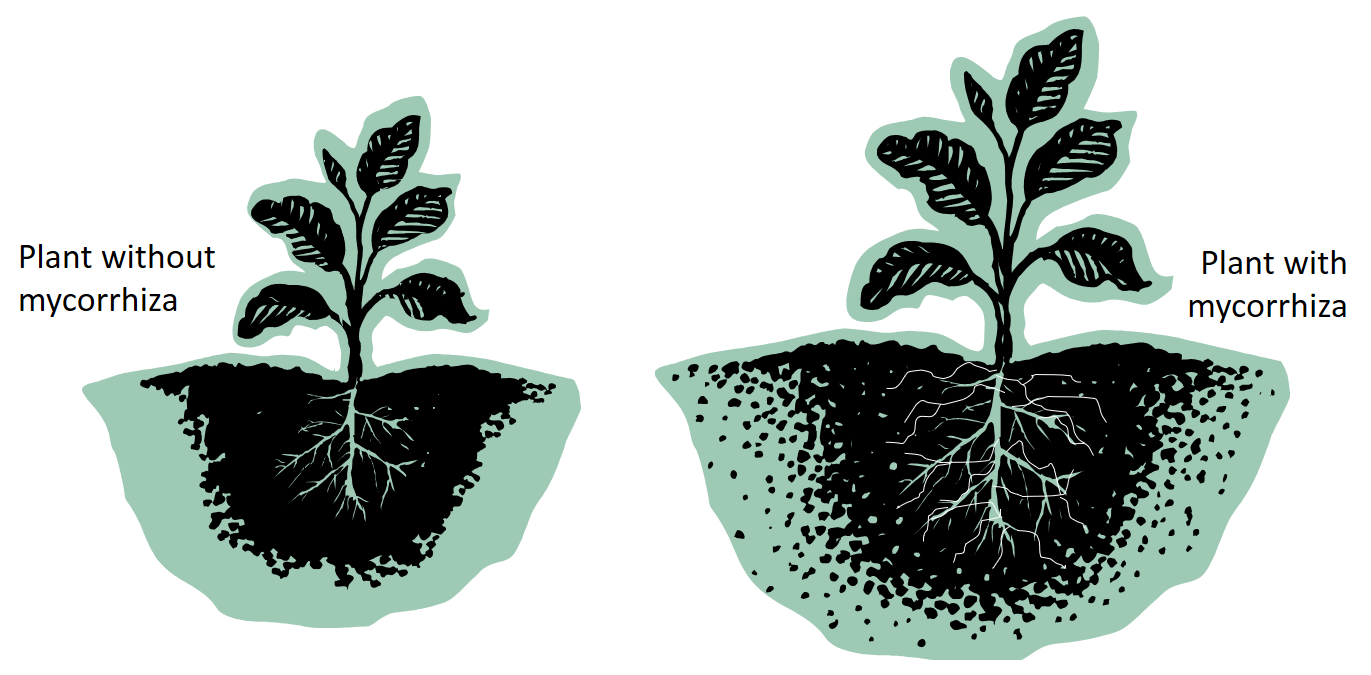- It provides strength to the plants, making them disease-free and stress-tolerant
- Increases the immune power of the crop in turn increasing product quality.
- Mycorrhiza expands the area of the roots increasing their water absorption rate.
Mycorrhiza can be used in three ways
- Soil treatment: Mix 4 kg/acre Mycorrhiza in 50 kg of well-decomposed cow dung or vermicompost/farm soil and then mix it in the soil before sowing
- Broadcasting: In 25-30 days of sowing, Mix 4 kg/acre Mycorrhiza in 50 kg of well-decomposed cow dung or vermicompost/farm soil and then spread over the soil.
- Through drip irrigation: Use of Mycorrhiza as drip irrigation 25-30 days of sowing at the rate of 100 gram/acre in standing crop.

